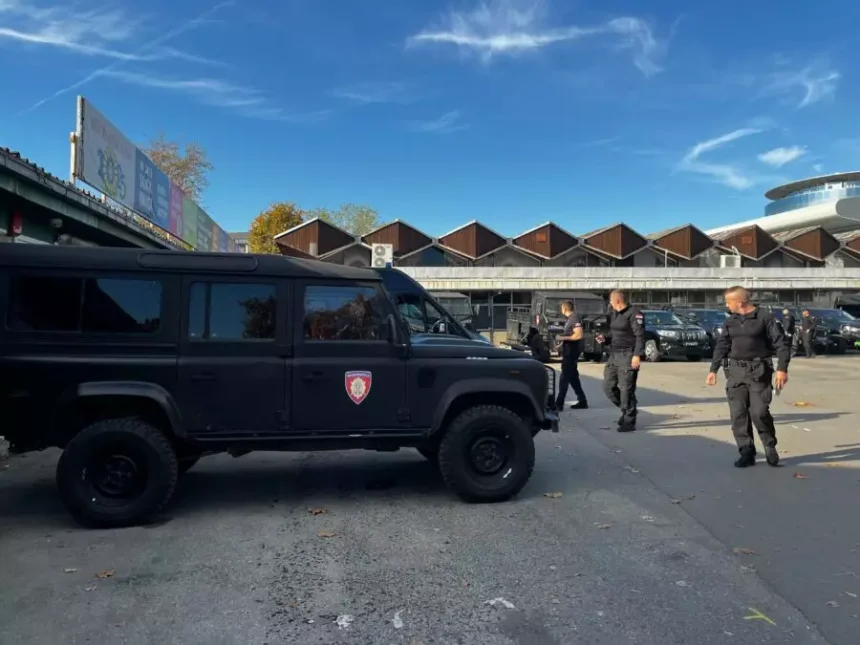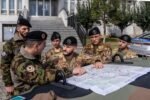On the first anniversary of the catastrophic collapse of the railway station canopy in Novi Sad, which claimed 16 lives and left one person critically injured, tens of thousands of citizens gathered across the city to commemorate the victims and demand accountability.
Symbolic Commemorations Across the City
Residents assembled at 16 locations around Novi Sad, one for each victim, before marching together to the railway station. There, they observed a solemn 16-minute silence, laid flowers, and lit candles in memory of those who perished. The event reflected deep public grief and growing frustration over perceived negligence and corruption linked to Serbia’s infrastructure projects.
The Ministry of Internal Affairs (MUP) reported that at the peak of the commemorative gathering, approximately 39,000 people were present, traveling from across Serbia to participate.
Student-Led Marches and Civic Participation
Students played a central role in the commemorations, continuing the grassroots activism sparked by the disaster last year. Two high school students, who had walked all the way from Belgrade despite injuries and exhaustion, were among the participants, emphasizing the significance of being part of the remembrance.
Veterans and volunteers provided assistance, offering first aid and ensuring safety during the marches. One volunteer remarked, “If the regime is even somewhat normal, it will leave this day untouched,” reflecting the public sentiment that authorities should not politicize or obstruct the commemoration.
International Attention and Media Coverage
The tragedy continues to draw attention from international media, framing the memorial as both an expression of mourning and a symbol of widespread dissatisfaction with the government of President Aleksandar Vučić. Reports by agencies including AP and Washington Post emphasize that participants view the canopy collapse as emblematic of corruption and mismanagement in state infrastructure projects, with no one yet held legally responsible.
Voices of the Victims’ Families and Public Figures
Dijana Hrka, mother of one of the victims, called on the Serbian President to announce new elections, pledging to begin a hunger strike outside the city assembly to demand justice.
Student Nađa Šolaja declared that the incident was not merely a tragedy but a crime, emphasizing that families deserve answers: “This was the largest loss of life in Novi Sad in the 21st century. Those who caused it must be held accountable.”
Other participants highlighted systemic failures, from prolonged corruption in the construction sector to political interference and disregard for engineering standards. Professor Sanja Fric from the University of Belgrade confirmed that the canopy collapsed due to structural failure, primarily from corrosion in steel cables, compounded by years of mismanagement and neglect.
Challenges During Commemoration
The day’s events were marked by logistical challenges, including water shortages in central Novi Sad and partial road closures. Authorities restricted media access in certain areas, though teams from several European countries were present to cover the events. Veterans and local residents ensured the safety of participants, particularly students and children.
Nationwide and Diaspora Solidarity
Commemorative events were also held across Serbia and in cities abroad, including Germany, where Serbian communities and clergy participated in synchronized observances. The slogan for the commemoration, “Stop wherever you are! Let silence resonate,” underscored the shared national mourning and call for justice.
Remembering the Victims
The fallen include Sara Firić (6), Valentina Firić (10), Đorđe Firić (53), Milica Adamović (6), Sanja Ćirić Arbutina (35), Mileva Karanović (76), Nemanja Komar (17), Miloš Milosavljević (21), Stefan Hrka (27), Anđela Ruman (20), Goranka Raca (58), Đuro Švonja (77), Vukašin Raković (69), Vasko Sazdovski (46), Anja Radonjić (24), and Vukašin Crnčević (18). Teodora Martinko survived with severe injuries.
As Serbia marks this somber anniversary, the public’s demand is clear: accountability for the victims and systemic reforms to prevent such a tragedy from ever happening again.







